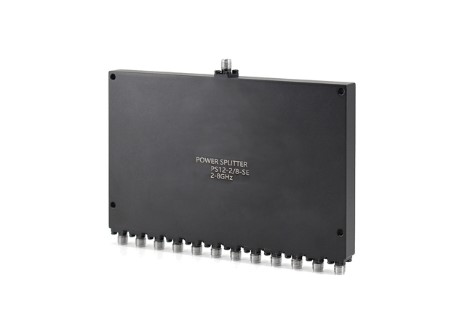What is a Power Divider Used for?
A power divider is a device that divides the energy of an input signal into two or more channels and outputs equal or unequal energy. It usually distributes the energy equally and divides the output into two, three, four, six, eight, twelve, and so on. Power divider is a key component in RF (Radio Frequency) systems designed for high-power applications. This device serves as both a power combiner and a splitter, effectively splitting the input RF signal into multiple paths or combining signals from different sources. In this blog, ATO Automation store will discuss the applications of power dividers.

Signal Transmission
Power divider is a common device in wireless communication. Its main function is to evenly distribute the energy of a signal source to several antennas, or to combine and output the signal energy received by multiple antennas, providing equal signal energy to multiple antennas or RF modules. Ensuring that the power difference between each output port is within an acceptable range helps eliminate imbalances in the system and improve the stability of the RF system. No matter how the power of the input signal changes, the power divider can ensure that the power of each output port remains consistent, which helps improve the transmission quality of the signal and the sensitivity of the receiver.
Receive and transmit signals, which enter the power divider through the input port. This is the core part of the power divider, consisting of passive circuits. It divides the input signal into several equal parts of energy, which are distributed to the output ports as needed. Each output port receives an equal amount of signal energy from the branch circuit. In this way, the signal strength of each output port is the same, ensuring the balance and stability of the RF system. The power divider mainly utilizes the impedance characteristics of the circuit to achieve average signal distribution. Specifically, when the input signal passes through the branch circuit of the power divider, due to the impedance matching of the circuit and the superposition effect of the signal, the signal amplitude and phase at each output port are equal, thereby achieving average distribution of the signal.
Power divider is a critical device in the RF field, mainly used to distribute the power of input signals to two or more output ports. Circuit design is the foundation of power dividers. Designers need to accurately calculate and design circuits to ensure that input signals are evenly distributed to each output port. This involves a deep understanding of circuit theory, electromagnetic theory, and RF transmission lines. Impedance matching is crucial in RF systems as it can reduce signal reflection and improve signal transmission efficiency. The design of power dividers also needs to consider impedance matching to ensure that the input signal can be effectively transmitted to the output port. In the fields of microwave communication and radio frequency technology, power dividers are commonly used to protect radio frequency amplifiers and other high-power devices.
Power Dividers and Control
Power allocator is an important means to ensure communication quality and resource utilization, which refers to allocating limited power resources to various users in the system. The principles of power dividers include equal power distribution, maximum ratio distribution, and underwater acoustic level distribution. Power control dynamically adjusts the transmission power of user devices based on the environment and user needs.
Static power control is to set the transmission power of the user equipment power divider based on the channel conditions and user requirements between users. By setting appropriate power levels, it is possible to meet the communication quality dividers requirements between users, but it cannot adapt to the dynamic changes in the channel environment. Dynamic power control is the real-time adjustment of the transmission power of user devices based on changes in the transmission environment. By receiving feedback information from the receiver and monitoring the channel status, dynamically controlling the transmission power can enable the system to adapt to different channel environments and user requirements, and improve the coverage and capacity of the system.
In mobile communication, power control can dynamically adjust the transmission power of user devices based on the user's speed and channel fading situation, in order to improve the communication quality and system capacity of mobile users. In wireless sensor networks, power dividers and control can dynamically adjust the transmission power of nodes based on their energy status and network topology, in order to extend the network's lifespan and improve the reliability of data transmission.
In summary, power dividers play an important role in wireless communication systems, improving communication quality, resource utilization efficiency, and system performance. With the continuous development of wireless communication technology, we can further research and improve power dividers and power control methods to adapt to different application scenarios and user needs.
Circuit Protection
The power divider mainly utilizes the impedance characteristics of the circuit to achieve average signal distribution. Specifically, when the input signal passes through the branch circuit of the power divider, due to the impedance matching of the circuit and the superposition effect of the signal, the signal amplitude and phase at each output port are equal, thereby achieving average distribution of the signal. The power divider can automatically cut off the circuit in the event of a fault or overload, providing protection for the circuit.
Power divider is an important component in electronic devices, which has the function of distributing input energy to multiple output ports. This article introduces the definition and application of power dividers, and provides a comprehensive, detailed, and complete exploration of their use.
There are various types and functions of power dividers, which are of great significance for fields such as wireless communication systems, radar systems, and microwave communication systems. I hope this article can help readers deepen their understanding and application of power dividers. If you have a need to purchase them, you can click on the ATO online store to make a purchase.

